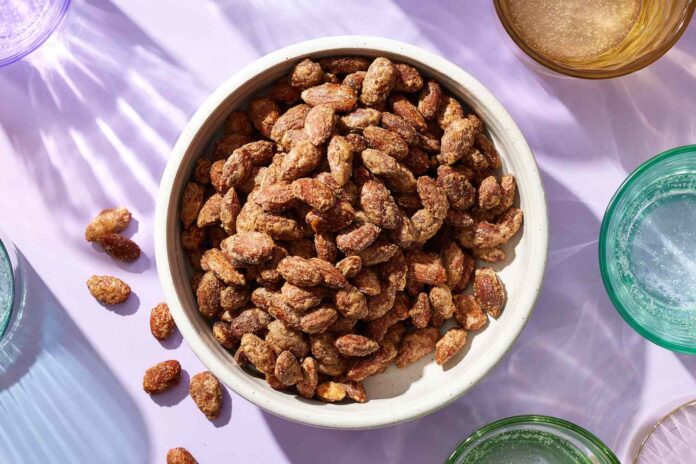As the new year begins, you may focus on eating more protein as one of your health goals. Protein is one of the three macronutrients – along with carbohydrates and fats – and comes from animal and plant foods. When you eat protein, it breaks down into amino acids in the body. There are two main types of amino acids: not necessaryThat your body makes on its own, and necessaryWhich you must get from the food you eat.
The 2020-2025 Dietary Guidelines for Americans recommend getting between 10% and 35% of your daily calories from protein, depending on factors such as your age, gender and kidney health. Including enough protein in your daily meals can help you feel full, keep your blood sugar stable and maintain lean body mass, but that’s not all. “Protein plays a role in building muscle, providing structure to hair, skin and bones, transporting oxygen throughout the body, balancing hormones and supporting body processes including digestion,” says Bianca Tamburello, a registered dietitian with Fresh Communications.
One great way to ensure you’re eating enough protein and other nutrients is to include a variety of nuts and seeds in your meals. “Nuts and seeds provide more than just protein,” says Kathleen Benson, a certified registered dietitian with Top Nutrition Coaching. “Nuts and seeds contain a variety of micronutrients, including antioxidants, vitamins, and minerals, which play different roles in supporting overall health, from immune system support to skin health.”
Nuts and seeds are more than just delicious salad toppings. If you’re ready to up your protein intake and take advantage of all the health benefits nuts and seeds have to offer, take a look at our list of ten items, plus some delicious recipes you can make today.
1. Hemp seeds
protein: 9 grams in 3 tablespoons (30 grams), according to the USDA.
When it comes to plant-based protein, these mild-tasting seeds may be the star of the show. “Hemp seeds provide 9 grams of plant-based protein in 3 tablespoons, plus essential anti-inflammatory omega-3 fats,” says Tamburello. Hemp seeds are from the same species as the hemp plant but a different species. It’s full of nutrition. Try peanut butter, banana, and hemp for a unique but delicious snack.
2. Pumpkin seeds
protein: 8 grams per ounce (28 grams), according to the USDA.
These delicious seeds are another protein star and may help you get a restful night’s sleep. Pumpkin seeds are another protein-rich seed, containing 8 grams per ounce. “Enjoying magnesium-tryptophan-rich pumpkin seeds near bedtime can help you fall asleep faster and wake up feeling more rested,” says Tamburello. For an easy one-pan meal, try this Pumpkin Seed Salmon with Maple Carrots and Spices.
3. Peanuts
protein: 7 grams of protein per ounce (28 grams), according to the USDA.
Peanuts are actually a legume, but we include them here because they are packed with amazing health benefits. Review 2020 published in Food science and human wellness Show that peanuts can help you improve your cholesterol, triglyceride and blood pressure levels. “At 7 grams of protein per ounce, they are one of the best sources of protein when it comes to different nuts and seeds,” says Samantha McLeod, MS, RDN, a registered dietitian with Fresh Communications. For a unique twist on a salad, try this spicy cucumber salad with cilantro and peanuts.
4. Almonds
protein: 6 grams of protein per ounce (28 grams) according to the USDA.
If you’re looking for ways to improve your heart health, consider almonds. “They provide a good amount of protein, along with heart-healthy fats and vitamin E,” says Benson. One ounce of almonds provides about 6 grams of protein. While you can snack on raw almonds and toss slivered almonds on a salad, “don’t forget the health benefits of baking with almond flour. For a sweet and healthy snack, make an almond flour cake.”
5. Sunflower seeds
protein: 6 grams of protein per ounce (28 grams) according to the USDA.
These small but mighty seeds contain about 6 grams of protein per ounce, plus much more. “Sunflower seeds are a delicious source of protein and other nutrients, vitamins and minerals,” MacLeod says. They are often found in various nutrition bars and are a great addition to your favorite trail mix recipe! Speaking of bars, these Apricot and Sunflower Granola Bars are great for having a quick meal on hand.
7. Pistachios
protein: 6 grams of protein per ounce (28 grams) according to the USDA.
These little green nuts are a great source of protein but they have a surprising benefit: they’re great for eye health. “A serving of pistachios contains about 6 grams of protein,” Tamburello says. This nut contains high levels of specific antioxidants that protect against macular degeneration and the harmful effects of blue light on the eyes. For a boost of nutrients, prepare Pistachio Roasted Salmon with Broccoli.
7. Cashews
protein: 5 grams of protein per ounce (28 grams) according to the USDA.
For an antioxidant boost, try cashews. “Cashews contain 5 grams of protein per ounce, and also provide beneficial fiber and healthy fats,” says Tamburello. “Like other nuts, cashews contain a large amount of antioxidants that protect the body and cells from harmful substances.” This Garlic Cashew Chicken Casserole is a beautiful, warming Asian-inspired meal that we’re sure you’ll love.
8. Flax seeds
protein: 5 grams per ounce (28 grams), according to the USDA.
MacLeod likes to add flaxseeds to her smoothies for a boost of fiber and protein. “Flax seeds contain about 5 grams of protein per ounce, and they’re also high in fiber!” she says. There are approximately 8 grams of fiber in that ounce, plus they are easy to store. If you’re looking for a sweet and healthy dessert, these Oatmeal Blueberry Flaxseed Muffins are the best choice!
9. Hazelnuts
protein: 4 grams per ounce, according to the USDA.
Also called filbert, these hardy winter nuts have a slightly sweet taste and are packed with health benefits. “With about 4 grams of protein per ounce, hazelnuts are packed with nutrients, including protein,” McLeod says. I love roasting finely chopped hazelnuts and adding them to a delicious warm Brussels sprout salad during the winter months. In keeping with the winter theme, don’t think twice about trying Anthony Anderson’s Homemade Sweet Potatoes with Cranberries and Hazelnut Crumbles.
10. Walnuts
protein: 4 grams per ounce, according to the USDA.
These nutrient-packed nuts contain about 4 grams of protein per ounce, plus healthy fats and other nutrients. MacLeod points us towards a 2020 study published in Nutrients“,”[It shows that] The nutrients in walnuts (particularly omega-3 fatty acids) have antioxidant and anti-inflammatory effects that can have positive effects on cognitive function. Baked oatmeal with bananas, raisins, and walnuts is perfect for warming up on cold mornings.
Bottom line
With the wide variety of nuts and seeds available, you will never get bored. There are countless ways to include it in your daily meals. “Including a variety of nuts and seeds regularly can be a simple and effective way to ensure a wide range of beneficial nutrients,” says Benson. Nuts and seeds are a great way to focus on protein, but that’s just the tip of the nutrition iceberg.
#Nuts #Seeds #Ranked #Protein #Nutritionists



































